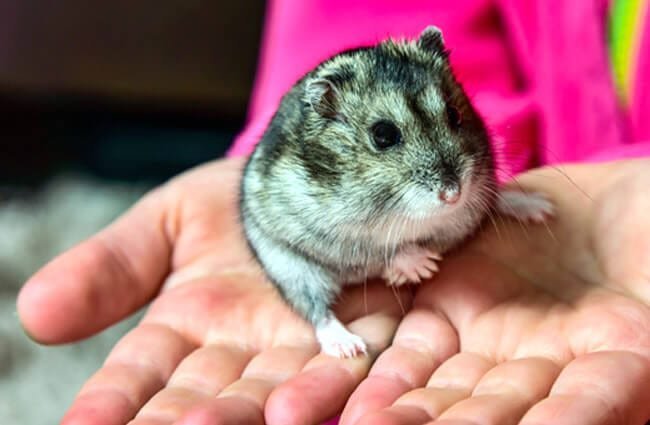Here are 6 real reasons that explain why hamsters’ fur changes its color. These are tiny animals, and you should take good care of them.
Do Dwarf Hamsters Fur Change Color? Dwarf hamster’s fur change color due to age, genetics, lack of sunlight, environmental factors, and waving.
Change in fur color is beneficial for hamsters, and it helps them adapt to the changes in the environment and protect themselves from the other animals.
Do Dwarf Hamsters Fur Change Color?
It is one of the unique things which happen in the dwarf hamsters naturally. They have this ability, which they adopt for various purposes.
Old age
This is one of the most common and dignifying cause of fur color changing in hamsters. Some of these are brown naturally, but in dwarf hamsters, they change color due to the growing age.
The impact occurs in the area as compared to any other part of the body. The fur gets thin and lightens with age, and there is no going back. There is no way to stop this process as you cannot stop the age of your pet.
The color turns in to rusty color in the brownish tone. This feature greatly impacts the hamsters’ skin and appearance, and there is no remedy to stop such changes.
Hamster’s Fur change color in different Seasons
Few hamsters change their fur colors in some seasons, and others remain normal. This color is non-permanent; it changes with the various conditions.
In the absence or lack of sunlight, they lose their color, and when the light gets available, they turn into their original form.
There are some extraordinary species, which are known as winter hamsters. They are known with this name due to the qualities associated with that season.
The absence of light and more cold make profound changes inside the hamster’s body, which gets out from inside to outside. This results in a dangerous condition of fur thickening, and it makes them lean and inactive.
Ultimately the whole surface area changes and the animals look completely different from before. They are grown naturally, and in this season, they change their color to white.
Artificial light can decrease the speed of the process, but it cannot treat the condition. Moreover, the artificial light prevents the pet from changing, but the skin turns white. You can feed them asparagus for better results.
Genetic reasons
They have some genetic changes like other animals. The mutations travel from the parents to the baby hamsters, which results in the transformation of fur color, and makes them different from rats.
Their babies get the same color as their parents have on their bodies. The changes and differences travel from the parents into the younger generation. This condition is rare, but it happens in many of them.
Lack of sunlight
The lack of sunlight is one of the significant issues which causes the change of fur color. It is due to the cold season, or sometimes the weather remains cold even in the summer season.
The lack of light and useless light both of them harms these tiny creatures in the same way. When you find these changes in the slight form, bring them to the sunlight or other light source. It saves them from dangerous conditions, you can also feed them celery leaves.
Waving
This is a special kind of color change of these tiny things. It travels in the form of waves on the body of hamsters. They change their color in the form of tidal waves. The most affected parts are the furs of these pets.
He adopts this waving for various reasons, sometimes a particular portion of the skin gets enough light, and the other part remains deprived. It results in this type of appearance.
Benefits
Every type of these tiny animals has its traits and impacts of weather and other conditions. Some of them love to live in the snow.
They change the color to white and make themselves comfortable in the snowy areas. It is an adaptive feature that is associated with the exposure and their comfort.
Protection
They change their fur color for various reasons; they have many problems related to predators. They keep themselves safe and secure from other animals that prey on them in the time of need.
A color change makes them adjustable in the environment and habitat they live in. This makes them so relax and comfortable that other animals find them as their habitat fellow.
This feature decreases the rate of death and prey in this community. They adapt it for security purposes, but it is sometimes non-seasonal. It becomes a habit of them, and they use it for their security purpose.
More sleep
The adjustment provides them comfort and relaxation. They change their color and hide in the sand and inside the tunnels. They make their houses in such places. Hiding becomes so easy for them that a small effort results in big advantages.
Snow dwarf hamsters change their white color into brown and hide inside the sands and brown tunnels. In this way, they complete the period of their sleeping.
They get maximum sleep and soothing, and it becomes a habit for them. This is one of the essential advantages of these pets because a good sleeping pattern keeps them active.
Adjustment in environment
Adjusting to the environment is necessary for them; otherwise, they harm themselves.
This is an adaptive advantage that benefits them in the best way. They feel more secure and happy with other species.
Appealing
This change makes them attractive to many people. The new color adds to their beauty and cuteness. Many people buy them for their unique appearance.

